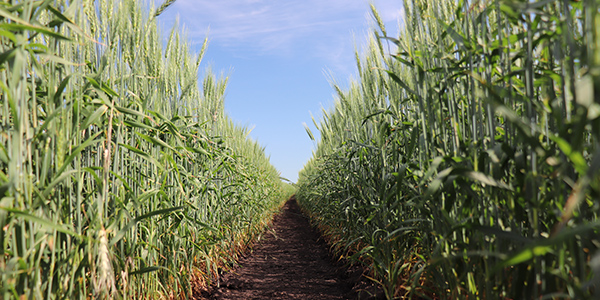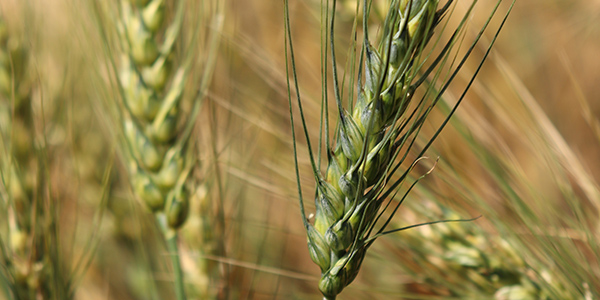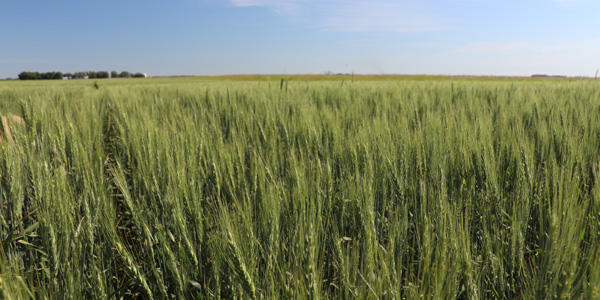Crop Profiles
Wheat
Spring wheat seeding typicially begins in May, with farmers aiming to seed as early as possible to maximize yields, and harvest typically occurs in August. Winter wheat is usually seeded in early to mid-September into the standing stubble of the previous crop (often canola), to allow snow to be trapped and help the winter wheat successfully overwinter. Winter wheat is harvested earlier than spring wheat, often in late July to early August.
Wheat is grown throughout the agricultural regions of Manitoba and can adapt well to both cool/wet and hot/dry conditions. It was first planted in Manitoba by the Selkirk Settlers, whose first wheat crop was harvested in 1815.



Most of the wheat grown in Manitoba is Canadian Western Red Spring (CWRS). Other wheat classes grown in Manitoba include Canada Northern Hard Red (CNHR), Canada Prairie Spring Red (CPSR) and Canada Western Red Winter (CWRW).
Wheat is used to make a variety of food products, including breads, pasta/noodles and crackers. Eleven per cent of Manitoba’s average wheat production is processed in-province at one of three commercial wheat mills: ADM Milling, Brar Natural Flour Mills and Prairie Flour Mills.
End Uses
Did You Know?
Most of the wheat grown in Manitoba is Canadian Western Red Spring (CWRS), which is highly regarded domestically and abroad for its superior milling and baking quality.
Annual Stats*
Manitoba Wheat Usage**
Seeded Area & Production
Yield: Manitoba vs. Canada
Revenues: Weighted Price
Revenues: Total Value
ExportsTonnes & Export Value
Top Export Destinations**
Indonesia 11.1%(390,987 t)
China 10.2%(359,148 t)
Japan 9.3%(325,759 t)
* Seeded area, production and crop value data are an average of the 2018/19 – 2022/23 crop years. Export value data are an average of the 2017/18 – 2021/22 crop years.
** Manitoba Usage and Top Export Destinations data are an average of the 2017/18 – 2021/22 crop years.
SOURCES: LeftField Commodity Research, Statistics Canada, Canadian Grain Commission and Trade Data Monitor
